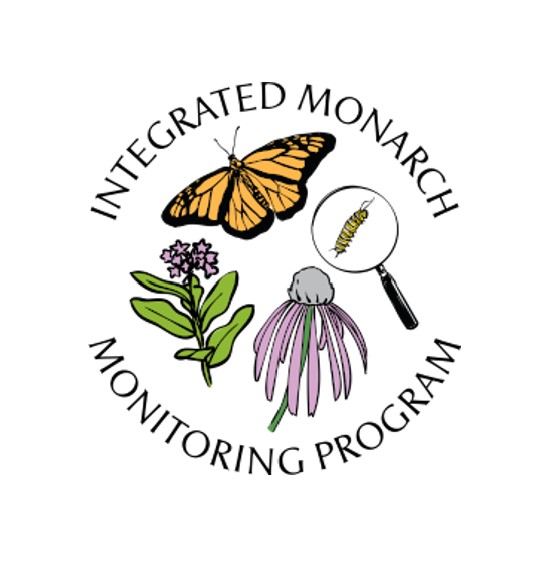Are you ready for some fun and educational outdoor adventures? If so, then join me on the Community Science Excursions throughout Spring, Summer, and Fall! Come out and have a great time learning and sharing in an epic journey following the Magical Monarchs!
This is our opportunity to contribute meaningful data to further the scientific understanding of key issues and to provide researchers with more data to support conservation efforts. Our involvement is essential to the understanding of the health and abundance of monarchs across the U.S. It’s a win-win situation for all of us including the monarchs!
I will be planning Community Science field trips to our local urban areas, state parks, natural areas, and state wildlife management areas.
Monarch Watch Calendar Project

Monarch Watch needs the assistance of community scientists in collecting observations of monarchs during the spring and fall, in order to assemble quantitative data on monarch numbers at critical times during the breeding season. The data will be used to assess their value in predicting trends in the population.
OBSERVATION PERIOD 1 begins March 15th for those of you in the South (latitude less than 35N) and April 1st for those in the North (latitide greater than 35N).
Journey North Monarch & Milkweed Project

Journey North is seeking volunteers to help track the monarch butterfly migration and milkweed phenology across North America.
If you live in the southwest and southeast of the U.S., stay vigilant. Monarchs are still being observed periodically in these areas. Please report your monarch and milkweed observations to Journey North. Explore Journey North maps to learn where monarchs and milkweed are being observed.
TN Valley NABA butterfly Counts

The North American Butterfly Association (NABA) has run the Butterfly Count Program in the United States, Canada, and Mexico, since 1993. Each of the approximately 450 counts consists of a compilation of all butterflies observed at sites within a 15-mile diameter count circle in a one-day period. Comparisons of the results across years can be used to monitor changes in butterfly populations and study the effects of weather and habitat change on North American butterflies.
Counts are open to public participation and new participants are encouraged. Depending on the count, one or more count parties will survey sites with the 15-mile diameter count circle on a given day. The compiler will let you know when and where to meet. There is a $3.00 fee to participate in a count.
Monarch larva monitoring project

The Monarch Larva Monitoring Project (MLMP) involves volunteers from across North America and New Zealand in monarch research. It was developed in 1997 by researchers at the University of Minnesota to collect long-term data on larval monarch populations and milkweed habitats. The project focuses on monarch distribution and abundance during the breeding season.
As an MLMP volunteer, your contributions will aid in conserving monarchs and their threatened migratory phenomenon and advance our understanding of butterfly ecology in general.
Integrated monarch monitoring program

The Integrated Monarch Monitoring Program (IMMP) is a national program to collect milkweed, nectar plant, and monarch use data from a variety of land-use types and regions. This information is vital to shaping our understanding of how monarchs interact with their environment, documenting conservation efforts, and tracking the population and its habitat as they change over time.
Monarch rx program

Adult monarch butterflies, Danaus plexippus, sometimes visit dry or injured parts of certain plants to take up toxic chemicals called pyrrolizidine alkaloids. These alkaloids do not provide the butterflies with food or energy, but we do believe this behavior potentially plays one or more important roles in the life history of the monarch butterfly. A better understanding of this curious aspect of their biology could also contribute to successful conservation. There are numerous gaps in our knowledge and some of these gaps can be addressed if we can convince a large number of monarch enthusiasts (community scientists) to record the number of monarchs they see each day and what the monarchs are doing, along with general information about the physical conditions associated with each observation.
Project monarch health

Monarch Health is a community science project working to track the prevalence of the protozoan parasite Ophryocystis elektroscirrha (OE) in monarch butterflies in North America.
This long-term, widespread data allows scientists to better understand where and when this parasite is likely to be the most prevalent. Although this parasite does not infect humans, it can make butterflies very sick. Monarchs infected with OE may be too weak to emerge properly from their chrysalides, resulting in deformed wings and an inability to fly. In other cases, infected monarchs can look completely normal but cannot fly as well or live as long as healthy monarchs. Because monarchs are migratory, this can impact their ability to complete their journey down to Mexico, where they hibernate during the winter.
Anyone interested in monarch butterflies can participate! Monarch Health community scientists include people of all skills, ages, and backgrounds, including families, retired persons, classrooms, monarch organizations, nature centers, and other individuals.
monarch watch tagging program

The Monarch Watch Tagging Program is a large-scale community science project that was initiated in 1992 to help understand the dynamics of the monarch’s spectacular fall migration through mark and recapture. Each fall Monarch Watch distributes more than a quarter of a million tags to thousands of volunteers across North America.
Volunteers participating in the program, capture monarchs throughout the migration season, record the tag code, tag date, gender of the butterfly, and geographic location then tag and release them. At the end of the tagging season, the data is submitted to Monarch Watch and added to their database to be used in research. Monarch tags are only distributed to areas of North America, East of the Rocky Mountains.CC
